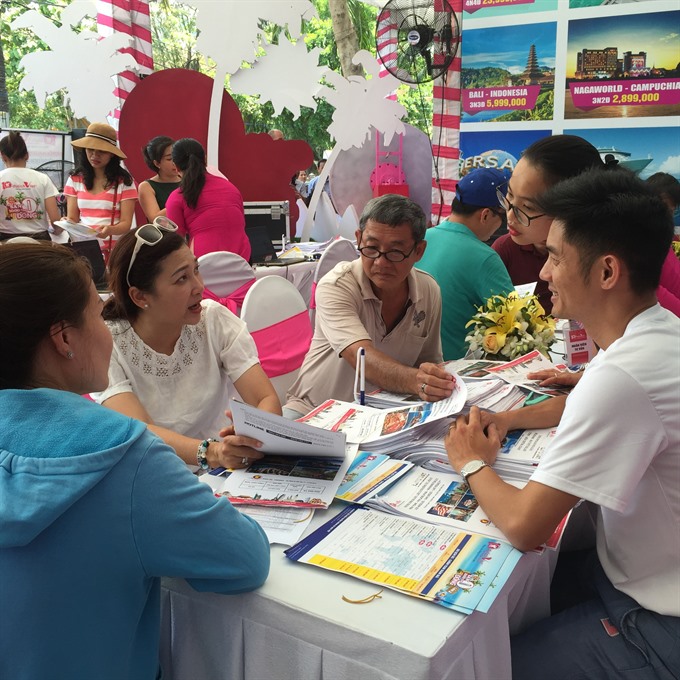 Economy
Economy

Social platforms are effective channels where online tourism firms interact with potential customers, and the travel industry must transform to keep pace with technological changes, experts have said.
 |
| Visitors learn about tours at the HCM City Tourism Fair. Photo Thu Hằng |
HCM CITY — Social platforms are effective channels where online tourism firms interact with potential customers, and the travel industry must transform to keep pace with technological changes, experts have said.
Lã Quốc Khánh, deputy director of the HCM City Department of Tourism, said the fourth industrial revolution is making its way into our lives, with almost every device being connected with the internet, representing a new way of communicating and doing business.
With Industry 4.0, the tourism industry must figure out how to adopt new technologies to engage with a customer and gain market share, he told an online tourism forum held yesterday (April 13) in HCM City.
The forum was held as part of the HCM City Tourism Fair.
Việt Nam ended 2017 with GDP growth of 6.8 per cent, Huỳnh Bích Trân, deputy director of Nielsen Việt Nam, a global information and measurement company, said.
The service sector also saw significant growth, and contributing to this was increasing tourism and a number of government initiatives, she said.
The number of domestic tourists reached 73 million last year, a year-on-year increase of 20 per cent, while the number of foreign tourists rose by 30 per cent to 13 million.
Vietnamese consumer confidence finished 2017 on a high note as Việt Nam continued to be ranked as the seventh most optimistic country in the world, according to the latest issue of the Conference Board Global Consumer Confidence Survey done in collaboration with Nielsen.
There was a sustained high confidence level among Vietnamese consumers through 2017, the survey found.
Vietnamese consumers were eager to spend on big ticket items to enhance the quality of life. Nearly half of all consumers were willing to spend their spare cash on buying new clothes (49 per cent) and on holidays (44 per cent).
There were 23 million “connected” spenders – referring to people who have access to the internet -- in Việt Nam in 2015 and the number is expected to nearly double to 40 million by 2025, according to Nielsen.
By 2025 their spending is expected to account for a half of all consumer spending.
Smartphones sustain the growth momentum as usage and ownership keep increasing in Việt Nam.
According to the 2017 Nielsen Vietnam Smartphone Insights Report, the number of people using smartphones accounted for 84 per cent of all phone users in 2017 compared to 78 per cent a year earlier.
In secondary cities, 71 per cent of people use smartphones out of the 93 per cent that use mobile phones.
More notably, in rural areas, while 89 per cent of the population own a mobile phone, 68 per cent of them possess a smartphone.
Social media could be a channel to bring customers to online tourism enterprises, and optimising access for connected customers holds the key to success, Trân said.
Some sources that customers consult before using services include social media (60 per cent), friends and relatives (48 per cent) and online travel forums (45 per cent), she said.
The feedback and comments on forums from earlier customers have a strong effect on the decision of new customers, she added.
According to Jennifer Châu, business manager of Facebook Việt Nam, on average Vietnamese customers spend three hours a day on mobile phones, more than on newspapers (56 minutes), television (1.4 hours) or radio (43 minutes).
It is expected that by 2021 half of online tourism revenues would come from mobile phones.
"There are 59 million active Facebook users in Việt Nam, with 97 per cent of them using smart phones to browse," she said.
All travellers are users of social platforms and Facebook is the top social platform, according to Châu.
Creative videos with good contents are the most effective way to touch potential customers. —VNS




